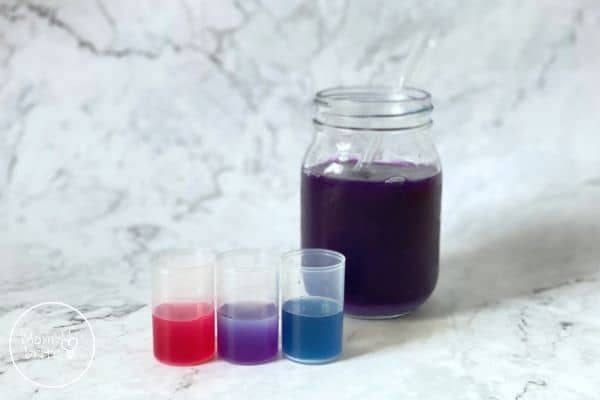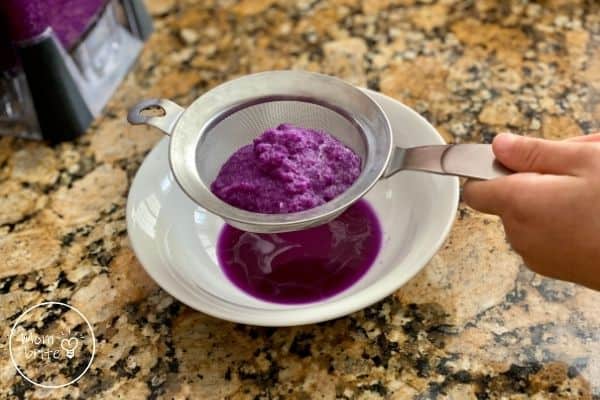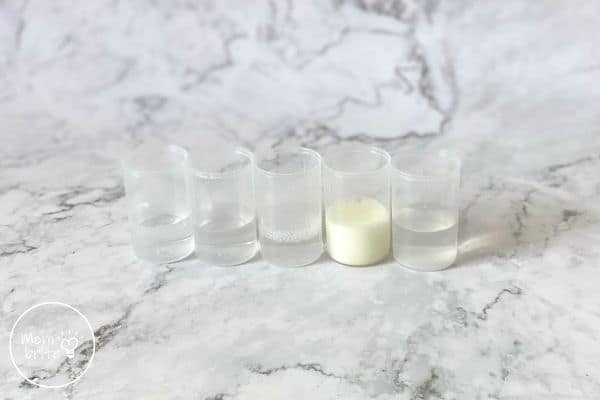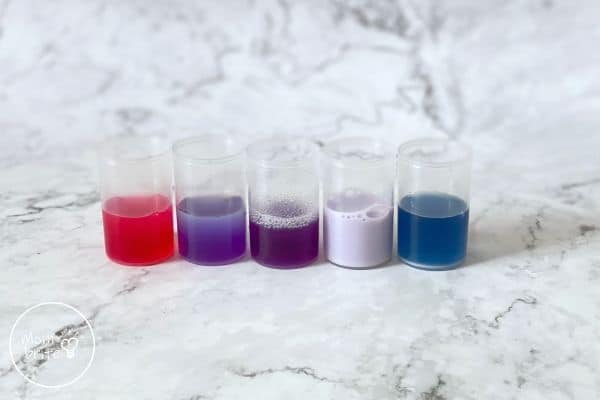Whether or not you like red cabbage, you can use the red cabbage juice as a pH indicator to determine whether a liquid is an acid or base. It’s a fun and easy science experiment that your kids will enjoy!

Are you a fan of red cabbage? I personally don’t love red cabbage, though I will eat it in a salad.
With this red cabbage juice indicator experiment today, we are not going to eat the cabbage. Instead, we are going to use red cabbage juice as a pH indicator.
I will warn you, your house might smell a little during the process of making red cabbage juice. But it’s all in the name of science! Even though your kids’ noses might not love the smell of this red cabbage lab experiment, their eyes will be amazed at how the red cabbage juice makes different liquids change colors according to their acidity.
What is pH?
Before conducting the experiment, it’s important to understand what is pH.
pH, or the power of hydrogen, is a measure of how acidic or basic a solution is. The range goes from 0 to 14, with pHs of less than 7 indicating a solution is acidic, and pHs of more than 7 indicating a solution is basic. A pH near 7 means the solution is neutral.
Red Cabbage pH Indicator Experiment
Supplies:
- Red cabbage
- Knife
- Blender
- Strainer
- Bowl
- Clear cups or glasses
- Household liquids to test
- Optional: dropper
Instructions:
Prepare the Red Cabbage Juice
1. Use the knife to chop up the head of red cabbage into small pieces. About 2 cups of chopped cabbage should be enough for this experiment, but feel free to make more if you want to test all kinds of liquids around your house. You can also use the extra red cabbage juice to make green eggs and ham for Dr. Seuss’s birthday!
2. Throw the chopped red cabbage in the blender with just enough water so your blender can process the pieces. Blend the mixture on high until smooth.
3. Pour the liquid through a strainer to filter out the red cabbage pulp.

Prepare Household Liquids
4. Decide which household liquids you would like to test. Pour each one into its own glass, leaving room for the cabbage juice. We used vinegar, tap water, soapy water, milk, and baking soda/water solution. Other liquids you can use include but not limited to coffee, seltzer water, lemon juice, and other types of juices.
Make sure you use caution and keep your kids away from handling any strong acids or bases.

Conduct the Red Cabbage pH Experiment
5. Pour a little bit of red cabbage juice indicator in the first glass. Watch the color change. We used a dropper for this step to avoid accidentally spilling the cabbage juice.
6. Continue until there is cabbage juice in all the glasses. You may need to use a spoon or chopstick to stir the solution if the cabbage juice is not mixing with the household liquid. Add more cabbage juice indicator if necessary.

Science Behind the Red Cabbage pH Indicator Experiment
Red cabbage contains a water-soluble pigment called anthocyanin. This pigment turns different colors depending on the acidity of the liquid.
The pigment turns red when mixed with an acid (pH < 7) and bluish-green in a base (pH > 7). If the pH is neutral, then the red cabbage juice will not change color, such as in the case of tap water.
I hope you like this simple pH experiment that teaches your kids the meaning of pH and how to tell when something is acidic or basic. If you have extra cabbage juice, you can spray some on coffee filters. Once the coffee filters dry, cut them into strips and now you have homemade litmus paper at home. This is a great science fair project you can do for school!
Of course, you can always drink the leftover cabbage juice, but the flavor might be quite strong! I suggest adding juices from other vegetables or fruits to improve the flavor prior to consuming.
Related Posts:
